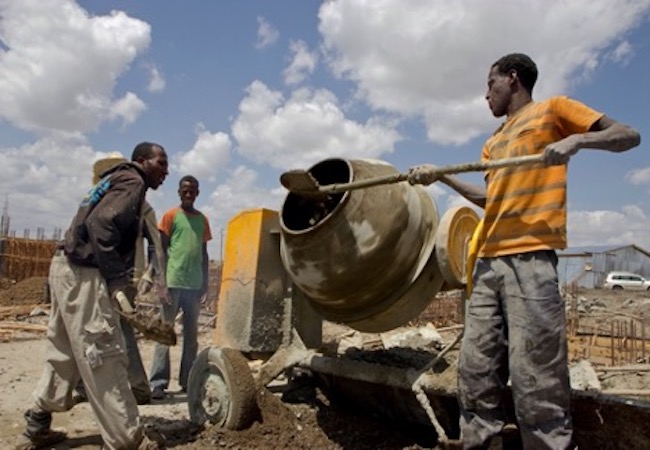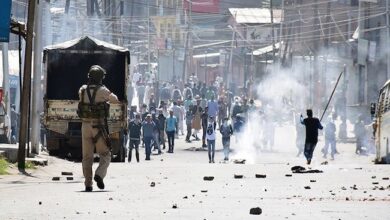
By Ashwin Telang
As one of the poorest countries in the world, Ethiopia needs international aid to escape poverty. Luckily, the U.S and China have entered the aid arena. Both are actively investing in Ethiopian education, infrastructure, and employment training. This synchronized dynamic of U.S.-Chinese assistance invites cooperation and competition. Unexpectedly, peaceful competition has motivated both countries to help more. Broadly, the Ethiopian model of aid shows how powerful nations can transcend above geopolitical differences to co-act and cooperate, while still leveraging competition.
Competition
Ethiopia’s ensuing cycle of unrest and economic instability commands the attention of both Chinese and American aid programs. However, the presence of two major superpowers prompt a beneficial type of competition for Ethiopia. Put simply: each country pushes the other to contribute more aid. This way, neither nation is putting on a show through superficial remediation but instead, truly promoting growth.
America often flaunts its role in Ethiopia as the “single largest single donor of humanitarian aid,” providing more than $900 million. If it wasn’t for Chinese competition, however, the U.S. would be donating much less. American peacebuilders are also fostering economic diversification — educating Ethiopians, investing in business, and private-sector stake-holding. Responding to food shortages, the US peace food corps also distributed food supplies. Furthermore, they taught farmers more new techniques and emergency precautions. These initiatives ensure that aid sets Ethiopia up for long-term self-sufficiency, while simultaneously easing short-term poverty. Taken together, the breadth of American projects were centered on a strategy of “challenging Chinese influence.” Although this isn’t the most morally sound reasoning to expand humanitarian aid, Ethiopians are receiving more U.S help nonetheless.
At the same time, China has invested a whopping $13.7 billion into infrastructure. Such aid aims to facilitate economic renewal and easier transportation across Ethiopia. Chinese banks have also funded over 1,000 power and renewable energy projects. These have created thousands of jobs and jump started the economy. China is also building teleconomication and railway infrastructure to address unemployment and immobility. These projects have forged strong relations between China and Ethiopia. But more important to China: they have cemented China as a stronger competitor to US aid.
Peaceful competition clearly reinforces the scope of both Chinese and American projects. Put bluntly: China and the U.S are playing a catch-up game with each other. Meanwhile, Ethiopia is always the winner — winning more aid each time the U.S and China compete. Clearly, this subdued form of competition is rewarding for developing, conflict-affected countries.
Cooperation
While U.S.-Chinese competition and cooperation are mutually reinforcing, they aren’t mutually exclusive. Many times have American and Chinese companies pooled resources and collaborated to generate the greatest economic impact. For example, US companies contract Chinese workers for infrastructure projects. China similarly borrows power supplies from American companies in Ethiopia. On some projects, US and Chinese contractors even collaborate. And at the least, these companies often communicate to prevent overlapping projects from taking place.
Cooperation is most prominent on a regional level. In 2017, both American and Chinese CDCs collaborated in training doctors and running joint immunization programs. Such projects have continued to supplement medical needs during COVID-19 as well. The US and China also cooperatively manage the UN’s assistance program in Ethiopia which educates youth and women.
Though cooperation operates on a smaller scale — far from international prominence — these smaller projects are often where it matters the most. This cooperation demonstrates how major nations can synthesize their financial capital to fulfill a joint goal — securing a prosperous Ethiopian future.
Coaction
Also important is how the US and China specialize in specific applications of aid. Ethiopian development is the broader goal, however each country stresses different aspects of development. For example, American aid priorities in education and stability, meanwhile China prefers infrastructure and capital investment. Furthermore, America often deploys utilities in rural areas while China’s projects are concentrated in urban zones like Addis Abas. David H. Shinn dubs this a “multifaceted” approach which allows Ethiopia to get the best of both types of aid. Without one, many key facets of development would be missing. For instance: if China was alone, only urban areas in Ethiopia would have power and the rural-urban economic gap would significantly widen.
The Future
While more cooperation is ideal, a large-scale program seems unlikely given current geopolitical tensions. Still, the U.S. and China should expand their complementary operations on a supranational, smaller scale. After all, Ethiopia still suffers from plenty of social unrest and crippling poverty. If Ethiopia is to become more peaceful, U.S. and Chinese projects must also continue to operate in harmony, without violence or disagreement.
Cooperation and competition in Ethiopia are unique in that they promote a common goal — accelerating Ethiopia’s transition to a stable society. Other major powers should follow this example, capitalizing cooperation and engaging in peaceful yet constructive competition.
Ashwin Telang is a Writing Intern at the Borgen Project, an organization which aims to make international poverty a focus of policy.




